IN an extraordinary moment of serendipity, a touring exhibition by the Asylum Seekers’ Centre in Sydney now showing at Belconnen Arts Centre coincides with a play about asylum seekers opening at the Street theatre this Wednesday, March 25 and running until the weekend. (http://citynews.com.au/2015/rare-play-asylum-seekers-comes-street/)
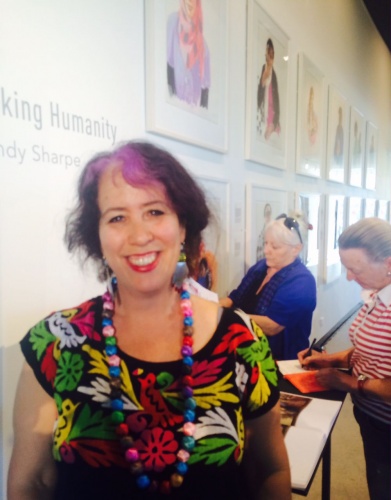
Archibald Prize winning artist Wendy Sharpe sat with 39 refugees and asylum seekers, capturing their likenesses to express their humanity and their personal stories in a bid to highlight our common humanity. The result is the show, “Seeking Humanity”.
Patron of Belconnen Arts Centre and former administrator of Christmas Island, Jon Stanhope was at the centre last Friday to speak about the project.
Praising Sharpe for her commitment to seeking humanity through her portraiture, Stanhope particularly applauded her for helping to make people aware of the actions that had been “carried out in our name.”
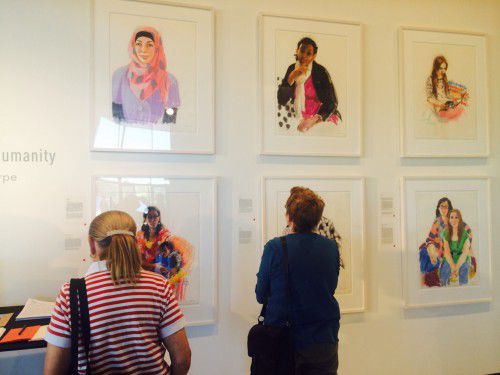
During his time in Christmas Island, he said, 600 boats had been sighted and he had been confronted on a daily basis by the human element of people who, for most of us, were “so far away as to be invisible.”
Stanhope lamented the fact that “we didn’t have the capacity to put ourselves in their shoes,” expressing the wish that there had been people who would do the kind of thing Sharpe had done.
And he wasn’t being partisan, regretting the fact that the ALP had taken the opportunity to hide behind the attack on Human Rights Commission president Gillian Triggs over the children in detention issue without confronting the policy itself, to which Labor had been partisan.
Wendy Sharpe’s initiative, he said, was a case of “more strength to the arts”
Melanie Noden, CEO of the Asylum Seekers Centre In Newtown, Sydney, was on hand with Sharpe and Stanhope on Friday to take questions from the assembled press and public.
Noden spoke of the “powerful, yet simple vision” of telling the stories of asylum seekers, their hopes, dreams and aspirations.
“We have heard stories of over 1400 people, and I always feel privileged to meet each and every one of them,” she said, explaining that the centre provided housing emergency support and material aid, especially important, since 70% of asylum seekers have no government support and half had no right to work. What was most extraordinary she said was that people reviled as queue jumpers or illegals (she believed too many people were confused over these terms) showed such warmth, kindness, intelligence and humour.
Sharpe said what she had done was not photographic in nature, but used what she called “the almost old-fashioned skill” of drawing to capture people just about hidden from the broader public.
She described the process by which Noden had organised a place for her at the centre where people could be drawn. These were either current clients of the Asylum Seekers’ Centre or people who had been in Australia for years.
Her initial idea, she said, had been to draw in black-and-white, but the first person to turn up was a woman in a bright red and yellow sari, so she quickly switched to coloured chalk pastels, completing the portraits in 2 to 3 hours, including the time it took to meet the subjects.
It was silly, she reflected, to think that you could know someone in 2 to 3 hours, but on the other hand, most of them had quite good English and he could she quickly got the sense of them as people – and that was the main idea.
To be sure, Sharpe explained, sometimes you got people who were vulnerable, but by and large they didn’t want her to show that way. On the other hand, one of the subjects was “the happiest woman I ever met”, because the day she came to Sharpe she had got her residency.
![Wendy Sharpe, A Strong Woman [the nurse], pastel on paper, 2014](http://citynews.com.au/wp-content/uploads/2015/03/Wendy-Sharpe-A-Strong-Woman-pastel-on-paper-2014-320x500.jpg)
“This is a way of stopping people from being treated as statistics,” Sharpe said, explaining that her subjects chose the way they wanted to appear. One, a nurse back in her home country who hopes to become a nurse here, wore her former nurse’s uniform with a bright and cheerful had scarf (she is pictured) and a sparkling necklace to help brighten patients up.
One, a former businessman who had escaped from the Taliban, was now a happy taxi driver with the hope and expectation of returning to business, and wanted to be drawn as a businessman. Similarly, lawyers and doctors often wished to be pictured as professionals. She was more than happy to draw them as they’d like to be seen, in bright African colours in one case.
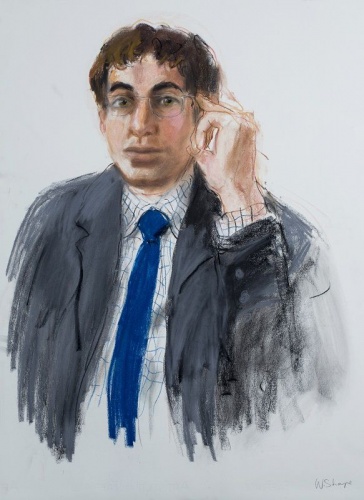
Sharpe said that the exhibition featured text panels with the stories of the different individuals. Those stories, pulled together from interviews by Tammy Burnstock, had been texted to the subjects for amendment. Sensitivities had to be respected and there was perceived danger for some people, who preferred to choose a different name for themselves, sometimes idealistic names like Hope or Faith.
So far there had been a few odd questions about refugees, not surprising when you consider that one of the main purposes is to “re-balance the fact that we never see any of them.” With 72 different nationalities arriving here as refugees, people are often surprised when there’s a blond asylum-seeker, for instance. A portrait of one refugee formerly involved in winemaking had been bought by a member of the wine industry and teachers had brought portraits of teachers.
Yes, Sharpe admitted, it had been “a little bit scary… normally with my work, I’d chuck some of it”, but that was when she was “using the subject for my own ends” whereas in this case the focus was on the needs of the subject.
“It was like being a trapeze artist without a net,” Sharpe concluded.
Wendy Sharpe, “Seeking Humanity,” at Belconnen Arts Centre, Tuesday – Sunday 10:00am – 4:00pm until April 12.
Who can be trusted?
In a world of spin and confusion, there’s never been a more important time to support independent journalism in Canberra.
If you trust our work online and want to enforce the power of independent voices, I invite you to make a small contribution.
Every dollar of support is invested back into our journalism to help keep citynews.com.au strong and free.
Thank you,
Ian Meikle, editor
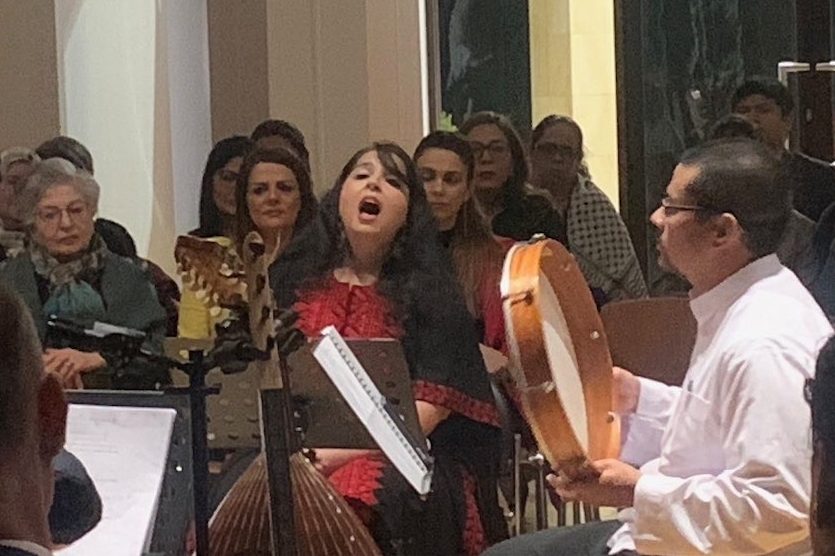

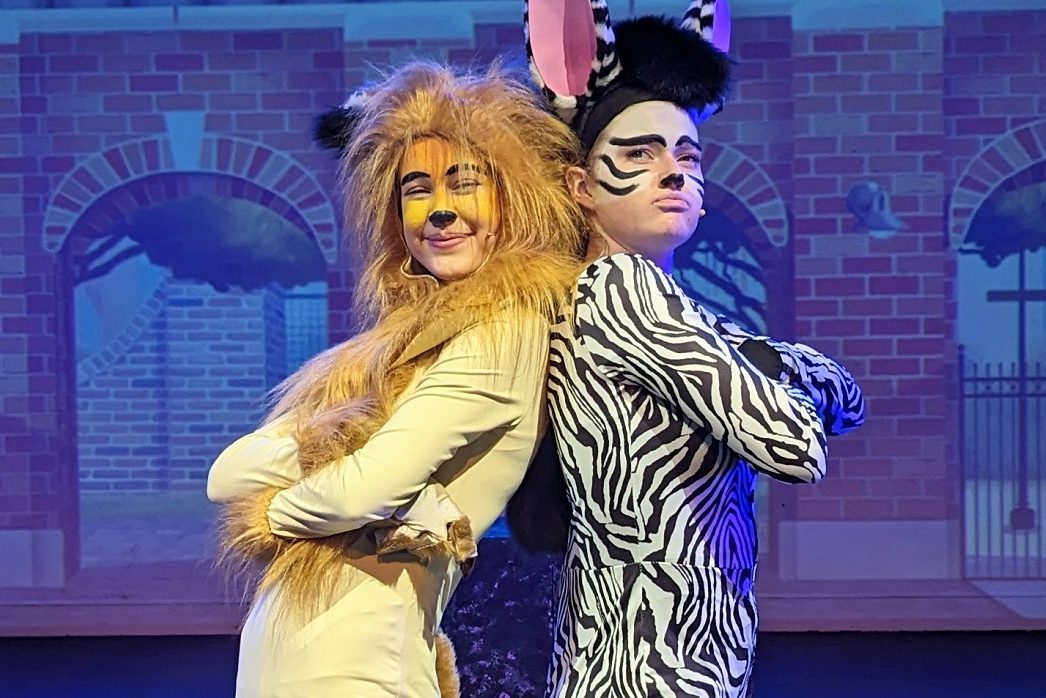

Leave a Reply